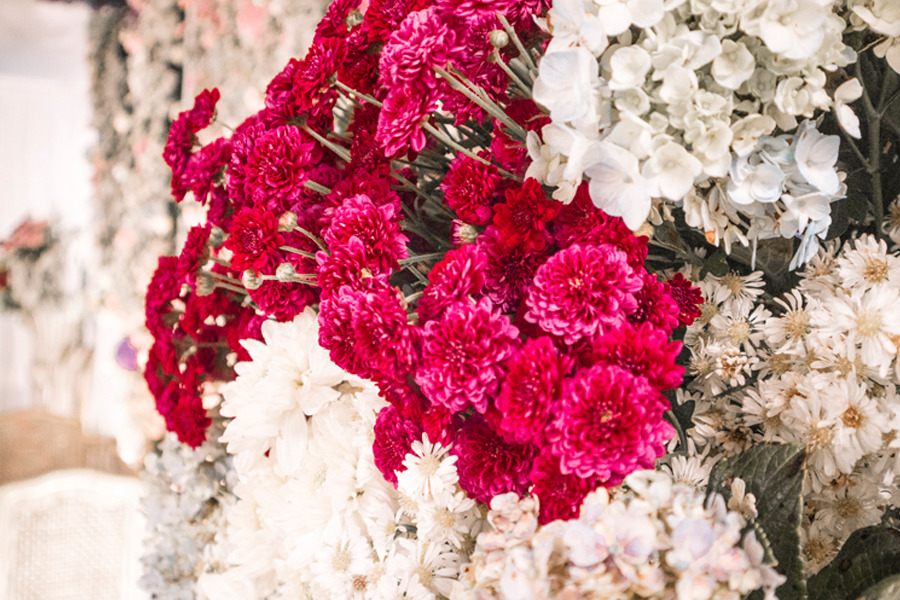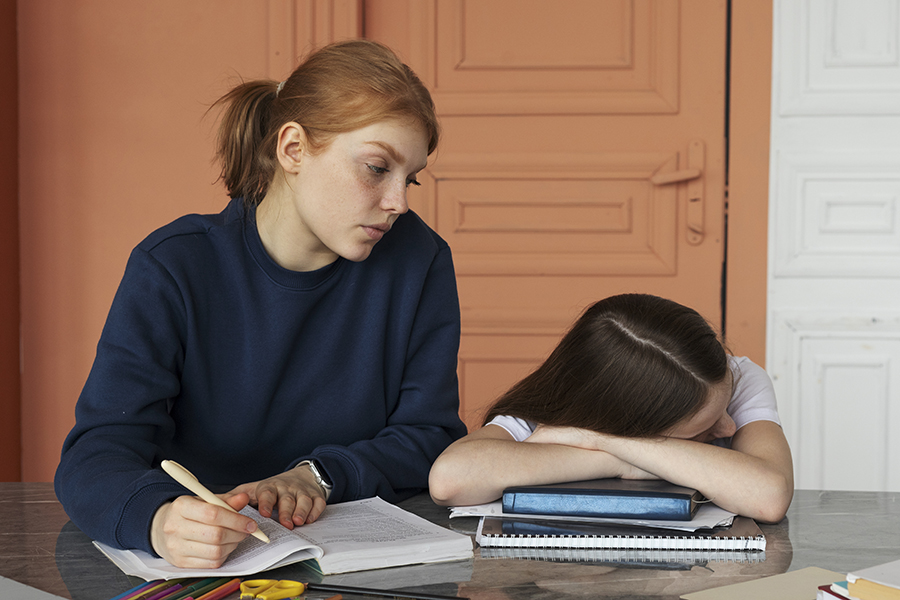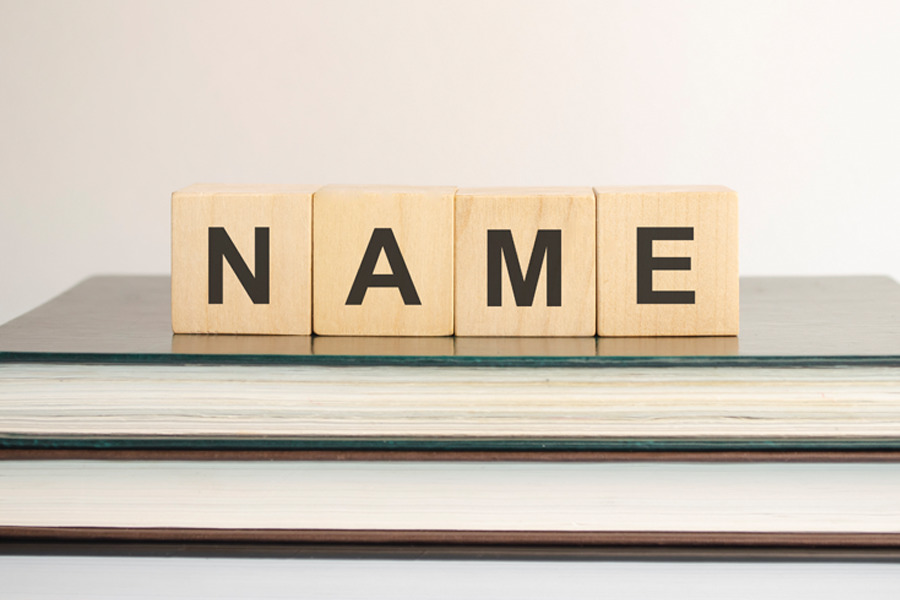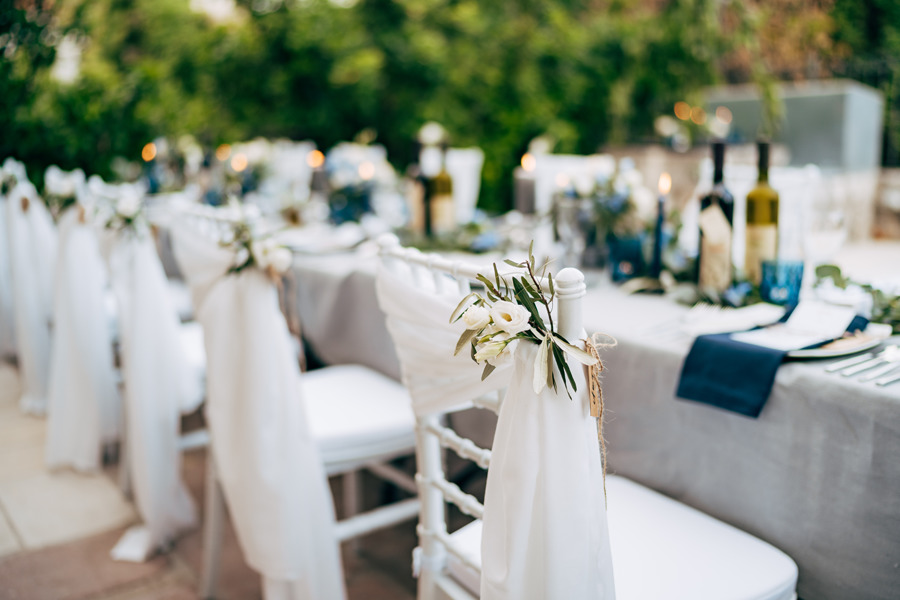Purchasing wedding flowers is an exciting time for many brides. After all, how often do you get to decorate with flowers? However, choosing wedding flowers can be complicated and also expensive. Flowers can range from ten to fifteen percent of the total cost of your wedding. It is also an area where the cost of flowers can be reduced to simple bouquets, boutonnieres, and centerpieces for the tables. The bouquets can often be reused during the reception.
Before making any purchases, take some time to plan your day, choose your venue and decide what decorations will be needed. A venue that looks bare may need more flowers to make it look nice, while many venues will look great with only a few flowers. Do you want flowers on each table? Can you reuse flowers from the church during the reception?
Do you want to decorate every space used on the wedding day with flowers? The church, the reception, the lounge, the bar, the head table and will you want to toss rose petals during the ceremony or the entrance to the reception. Are boutonnieres required for parents, ring bearers, and groomsmen? Does each pew in the church need s a flower arrangement, and can they be reused as table centerpieces at the reception?
What Is a Wedding Flowers Checklist?
A wedding flowers checklist is a great way to get a handle on what flowers will be needed for your wedding and also help manage the budget. The checklist should contain the following areas for flowers. Although there are many different areas where flowers can be on display during the wedding and the reception, it does not mean that every bride must have flowers in all of these spaces. Develop your overall budget for your wedding and plan accordingly. If your wedding budget is tight, think of those areas you can eliminate and consider which flower arrangements can be reused, avoiding waste and saving money.
Your wedding flower checklist should include the following:
- Brides bouquet
- Brides flowers for her hair or floral crown
- Bridesmaids bouquet
- Bouquet for tossing at the reception
- Flower girls bouquet
- Grooms boutonniere
- Additional boutonnieres and corsages
- Flowers for Ceremony
- Table arrangements or centerpieces
- Alta arrangements
- Pew arrangements
- Aisle decorations
- Tossing petals
- Flowers for the reception
- Cocktail table arrangements
- Bar decoration
- Escort card table arrangements
- Centerpieces
- Newlywed chair decorations
- Wedding cake decorations
- Buffet table / food station arrangements
- Lounge area arrangements
- Powder room decorations
- Limo decorations
The Ultimate Wedding Flowers Checklist
Once you have defined your budget and your floral strategy, it is time to apply your ideas to the detailed guide listed below.
- The Brides bouquet – this is the most important arrangement to consider and one that you cannot remove. However, you can manage the cost since pricing is dependent on the value of the flowers you choose. The bride’s bouquet is usually the most often photographed piece in your wedding. Every picture of the bride includes a floral bouquet.
- Brides flowers for her hair or floral crown – many brides will forgo a floral crown or hair piece; however, if you decide to include an arrangement for your hair, take extra care with your selection and design. Everyone will comment on the floral arrangement, and it will often be in more pictures than the bride’s bouquet. No pressure!
- Bridesmaids bouquet – most couples include bouquets for the bridesmaids. It is an important arrangement since the bouquets will appear in many pictures. They should also be color-coordinated with the bridesmaid’s dresses. Some brides will arrange for a different bouquet for the maid of honor to recognize her position and contribution
- Bouquet for tossing at the reception – you may decide to have a separate bouquet to toss at the reception if you prefer to preserve your bouquet. Many brides will simply toss the bride’s bouquet to the waiting single women in the group. It is a tradition that the woman who catches the bride’s bouquet will be the next to be married.
- The flower girl’s bouquet – should be kept small and simple and appropriate for the size of the person filling this role. Alternatives include tossing flower petals as she walks down the aisle. If the flower girl is carrying a basket, don’t forget to add floral decorations to the basket.
- Grooms boutonniere – should match the bride’s flowers and does not need to be large or elaborate.
- Additional boutonnieres and corsages – an optional choice is to have boutonnieres or corsages for other members of the wedding party. The wedding party members usually include the bride and groom’s parents and stepparents, grandparents, brothers and sisters, and of course, the ushers or groomsmen. You may want a separate boutonniere for the best man. Some parties will also include a boutonniere for the officiant.
- Flowers for Ceremony – as flowers are being selected for the ceremony, keep in mind that they all must be removed from the venue before the next event takes place. If they are not removed, caretakers may remove them and toss them into the garbage. This is a great opportunity to arrange for someone in your party to remove them and reuse these flowers during the reception held later in the day.
- Table arrangements or centerpieces – tables in the entryway to your reception are a nice touch to welcome your guests. They can spruce up an otherwise plain table.
- Altar arrangements – these arrangements will appear in many of your and your guest’s pictures. Some prefer a simple bouquet, while others prefer a floral arch. Also, think about how these flower arrangements can be reused to help with the budget.
- Pew arrangements – or arrangements on chairs lend a beautiful look to the wedding aisle. Again consider how these arrangements can be repurposed later in the reception.
- Aisle decorations – rather than flower arrangements on every row, on either side of the aisle, consider large arrangements on both sides of the aisle, strategically located to appear in all of the pictures, and welcome your guests to the ceremony.
- Tossing petals – is a great way to celebrate the exit from the ceremony. It is not required, and there may also be a venue cleaning fee to remove the petals, confetti, or other materials used by your guests.
- Flowers for the reception – the entrance or welcoming area and the head table are the primary areas many brides focus on for flower arrangements. However, there are other areas to consider to make your reception a memorable experience.
- Cocktail table arrangements – if you are having cocktails before the dinner, consider small arrangements on each cocktail table. Cocktail tables are usually quite small so keep your arrangements small as well.
- Bar decoration – can be a nice added touch for the bar to dress it up without taking too much space. Bars are often challenged for space.
- Escort card table arrangements – a small floral arrangement to dress up the seating arrangement escort table. They are not required; however, a redisplayed floral arrangement from the ceremony usually does the trick.
- Centerpieces – are viewed by your guests most of the evening and should not overpower the table with their size, obstruct the view of the guests and not give off too strong a scent. There is a fine line to strike in terms of size, scent, and beauty, so take your time with the selection and perhaps spend a little more in this area.
- Newlywed chair decorations – add arrangements for the groom and bride to decorate their chairs. Often small arrangements can be used to create a stunning look to them.
- Wedding cake decorations – the wedding cake is the centerpiece of the head table. However, in many situations, there may be a separate table for the wedding cake with a small floral arrangement to complement the wedding cake.
- Buffet table/food station arrangements – are usually limited in real estate space for the food and servers. Keep any floral arrangements smaller in size with the added flexibility for the arrangements to be moved to accommodate various food platter sizes.
- Lounge area arrangements – can follow the general décor of the reception or be void of floral arrangements. The main challenge is to create a cozy area for guests to gather and reminisce about the new couple. Repurposing floral arrangements from the ceremony can create a beautiful area for guests to relax.
- Powder room decorations – are the final touch for many brides. Carry the floral arrangements through to the powder rooms. Use small vases in the washrooms to welcome guests.
- Limo decorations – as the bride and groom leave in their limo for the night, they may want the limo decorated with floral arrangements to add to the getaway signs and décor your guests may add to the car.
FAQs
The following are some of the frequently asked questions many brides and grooms have about flowers for their upcoming wedding arrangements.
The budget on average for wedding flowers is usually 10 to 15% of the total budget for the wedding. However, flowers can be limited to the immediate wedding party during the ceremony and to only the head table at the reception. Small centerpieces can also be added to each table to reduce costs further.
The sky is the limit for wedding flowers in terms of décor and the type of flowers used in the floral arrangements. Brides should review the total budget for the wedding and expect to spend 10 – 15% on flowers while exercising the reuse of arrangements between venues.
Of course, everyone has their favorite flowers, and the cost is a factor; however, the following are the favorite flowers of many brides:
ᐅ Roses
ᐅ Peony
ᐅ Ranunculus
ᐅ Tulips
ᐅ Hydrangeas
ᐅ Gardenia
ᐅ Orchard
ᐅ Calla Lily
It is totally up to the bride. Many will skip bouquets if they do not like the look or cannot find bouquets that complement the bridesmaid’s dresses.
The average cost of a bridal bouquet is approximately $250; however, recently inflation is increasing the cost of flowers and bouquets, so expect this number to increase.
Key points
Wedding flower arrangements can add up quickly; however, they do add to the beauty of the ceremony and the reception. Focus on those arrangements that will be photographed often. For example, the bride’s bouquet, aisle arrangements, altar, head table, and guest table centerpieces. Brides want the floral arrangements to look great in all of the photographs.
The budget for floral arrangements should range between 10-15% of the total wedding budget. Reusing floral arrangements between the ceremony and the reception can assist in managing the budget.
The wedding flower checklist is a complete list for every bride to consider. It does not mean that all areas need to have flower arrangements. Limiting the flowers to the head table, for example, with small centerpieces at guest tables, can reduce the total cost while adding to the décor of the venue.
Consider the venue where the ceremony and the reception are to be held. Some may not need much to add to their elegance and character. While others may need to be spruced up a bit with floral arrangements to create the décor you are looking for.
Compare prices, services, and types of flowers used in the bouquets and boutonnieres. Many vary a great deal in price, based on the type of flower chosen for the arrangement.








